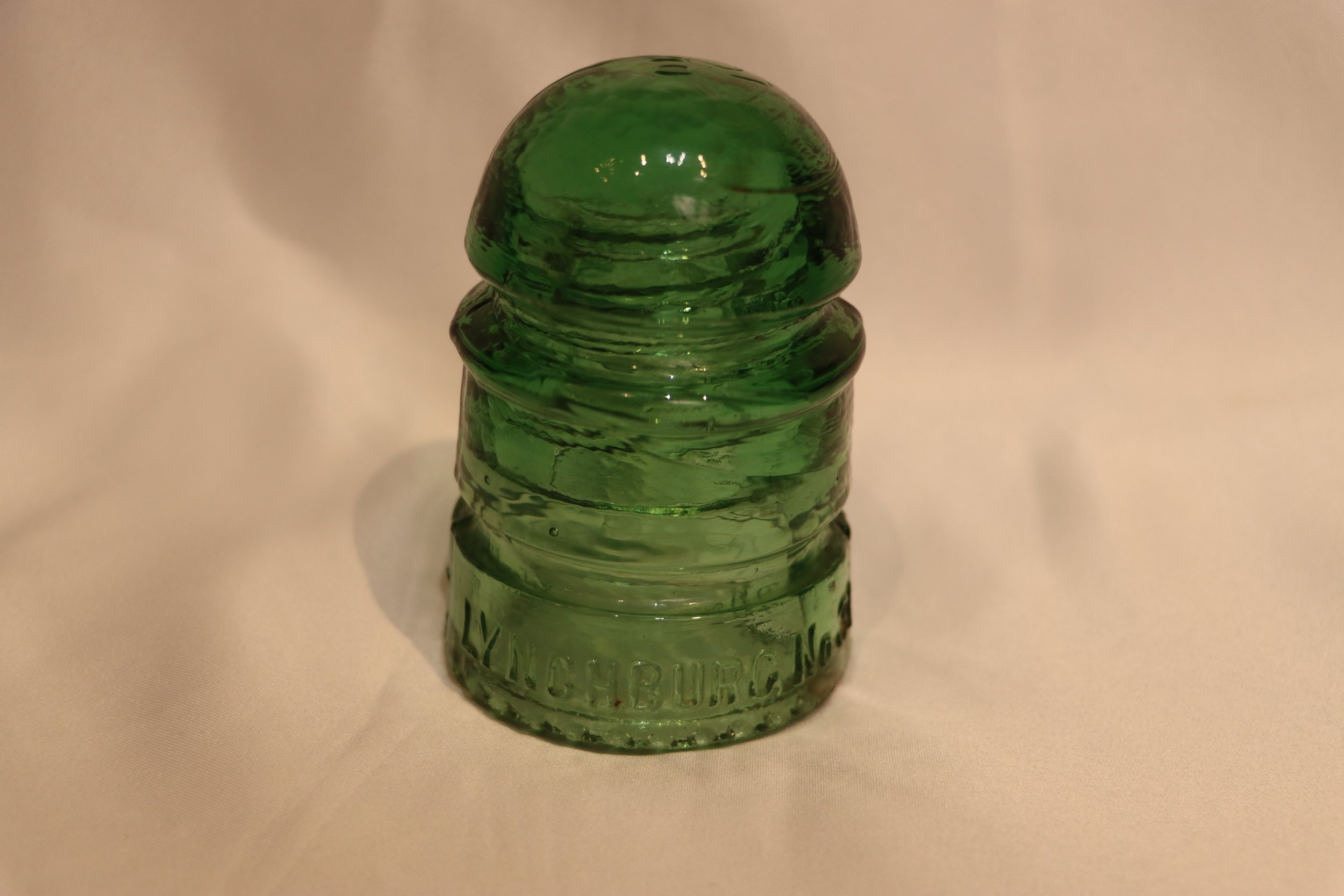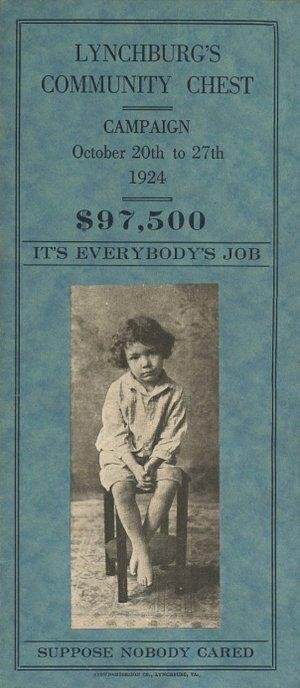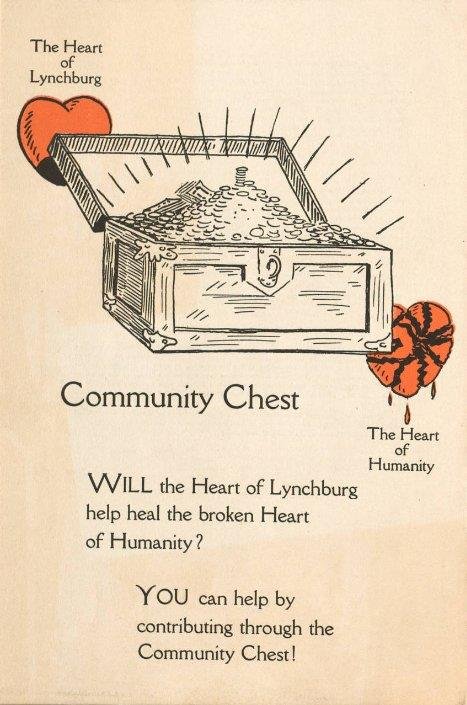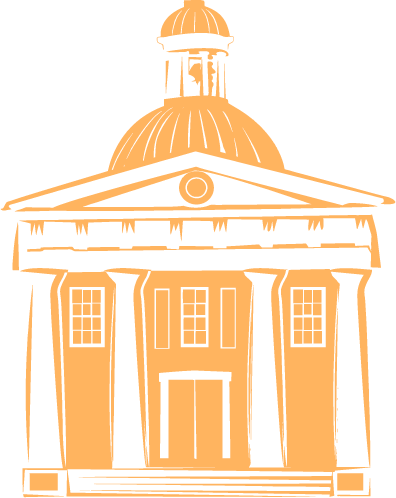Exhibit Curated and Digitized by Noelle Beverly
Celebrating 140 Years: Lynchburg Chamber of Commerce
(Lynchburg Regional Business Alliance)
For 140 years, the Lynchburg Regional Business Alliance has endeavored to strengthen the Lynchburg region’s economic development and to elevate the quality of life for its citizens. From its origins as the Lynchburg Chamber of Commerce, the Alliance has expanded over its history to represent Amherst, Appomattox, Bedford and Campbell Counties; the Towns of Altavista, Amherst, Appomattox, Bedford and Brookneal; as well as the City of Lynchburg. Throughout its evolution, the Alliance has maintained as its goal to create “a region where businesses and individuals thrive.”
Early achievements in Alliance history demonstrate the organization’s desire to support existing industries and attract or build new businesses. In more recent decades, the Alliance has concentrated on expansion, the promotion of start-ups, and the cultivation of leadership within the region. A focus on innovation and strategic forward-thinking is reflected in the Alliance’s 140th anniversary theme, “Connecting Commerce and Creativity.”
Over the Decades: Helping Lynchburg Thrive for 140 Years
The first president of the Chamber of Alliance was George M. Jones.
1883 - Inception
A group of business leaders convened in Lynchburg to form the region’s first chamber of commerce. The organization was officially chartered in 1883, and met at 135 Main Street in a building owned by James T. Williams.
Early 1900s- National Membership & Expanding Culture, Education, and Industry in Lynchburg
President William Howard Taft formed the United States Chamber of Commerce in 1912. The Lynchburg Chamber was included as a founding member. Over the next four years, the Chamber of Commerce contributed $300,000 to build The Virginian Hotel and helped raise funds to purchase land for the Virginia Episcopal School. In 1918, The Chamber of Commerce formed the city’s first glass plant, Lynchburg Glass Works (later known as Lynchburg Glass Corporation).
Lynchburg Glass Corporation.
Connecting Commerce and Creativity
In the early 1900s, when the focus of Lynchburg’s economy shifted from agriculture to manufacturing and retail, the Alliance (then known as the Lynchburg Chamber of Commerce) responded with innovative methods to bolster the city’s new industries. By understanding the trajectory of Lynchburg’s growth, raising funds for new businesses, and even creating its own industrial projects, the Chamber was able to reinforce manufacturing enterprises in the city, and enhance Lynchburg’s cultural presence in Virginia.
Glass preserving jars
Lynchburg Standard Mason jars made by Lynchburg Glass Corporation, ca. 1920s.
Lynchburg Glass Works & Lynchburg Glass Corporation
In 1918, the Chamber of Commerce created Lynchburg Glass Works, the city’s first glass plant, to support existing businesses in the area. Strategically built at the intersection of Ann and Hudson Streets, an important industrial hub, Lynchburg Glass Works produced preserving jars, bottles, and other glass containers for various companies including Dawson Brothers Manufacturing, a Lynchburg-based food processing and packing plant. As a result of various setbacks, including a plant fire and the failure of Dawson Brothers Manufacturing, Lynchburg Glass Works halted production and dissolved in 1922.
The following year, the Chamber of Commerce reorganized and opened the plant again under the name Lynchburg Glass Corporation. Operating under the slogan: “Supreme where Quality Counts,” Lynchburg Glass Corporation focused its efforts on the production of bottles and glass insulators.
Glass Insulators
In the mid-19th century, manufacturers began producing glass insulators for the growing communications industry. Used to fasten wires to poles, the naturally insulating glass “bells” protected wires from the elements and reduced the amount of electricity lost during telegraph and telephone transmissions.
Brochure from the Virginian Hotel, ca. late 1940-1952.
Glass Ashtray, Dinner Plate, Goblet, and Cream Pitcher used at The Virginian Hotel, ca. 1950. Menu from the Virginian, 1952. Gift of Richard C. Pearson, Jr.
1920s - 1950s: Enriching Lynchburg’s Quality of Life
In 1921, Along with the Home Economics Association, the Chamber helped create the Lynchburg Community Chest, which later became United Way of Central Virginia. After changing headquarters from Main Street to a suite on the 17th floor of the Allied Arts Building, in 1943, the Chamber continued to find ways to support business and culture in Lynchburg. In 1954, The Chamber contributed money to the Lynchburg Baseball Club, now known as the Lynchburg Hillcats.











Glass telephone wire insulators, manufactured at Lynchburg Glass Works and Glass Corporation, ca. 1920s. Gift of Bob Jones and Jean C. Earle.
The Virginian Hotel
As Lynchburg’s economy continued to thrive at the turn of the 20th century, the Chamber of Commerce anticipated the city’s need for a luxury hotel and raised $300,000 to ensure its completion. The Virginian Hotel, built in the extravagant Beaux Arts architectural style, opened in 1913 at the corner of 8th and Church Streets. The Chamber accurately predicted that providing opulent, state-of-the-art accommodations for both residents and visitors would attract new ventures and support the Hill City’s existing enterprises.
Guests of The Virginian enjoyed access to numerous amenities, including a cigar stand, a billiard room, a writing room, and tailor shop, as well as designated cafes for men and women, and a barbershop that offered manicures. Large sample rooms were also available for traveling salesmen to showcase their products. The hotel featured over a hundred guest rooms, each outfitted with hot and cold running water, a telephone, and either a brass or mahogany bed. Almost half of the rooms included a private bathroom.
In addition to a coffee shop, The Virginian boasted a large banquet facility and a kitchen with modern industrial appliances, including a refrigerator that could hold ten tons of ice.









1957 - Hosting Our Nation’s Leaders
In April, 1957, John F. Kennedy, then a United States Senator, spoke at the Chamber’s annual meeting.
This photo taken on April 4, 1957 shows Houston M. Crowder, seated at left, chatting with then-U.S. Senator John F. Kennedy when he spoke at the annual meeting of the Lynchburg Chamber of Commerce.



Program
From Lynchburg Chamber of Commerce, 42nd Annual Dinner meeting, April 4, 1957.
Autographed by U.S. Senator, John F. Kennedy.
Courtesy of Jones Memorial Library
Campaign button
“Kennedy for President,” ca. 1957.
Courtesy of Jones Memorial Library
Ticket
Admission ticket for dinner meeting. Originally to be held at Randolph Women’s College, the venue was changed to E. C. Glass High School to accommodate the number of attendees. April 4, 1957.
Courtesy of Jones Memorial Library
1970s - 1990s Nurturing Lynchburg’s Future
The Leadership Lynchburg program was established to foster future leaders in the region. Over the next few decades, the Chamber helped create community programs, including Crimestoppers, Partners in Education, the Small Business Development Center, and Regional Renaissance, a public visioning project that included the greater region.
2016 - A Fresh Moniker and A New Home
As it is known today, the Lynchburg Regional Business Alliance was formed from the combined resources and experience of the Lynchburg Chamber of Commerce and the Region 2000 Business and Economic Alliance. In June of 2016, the Alliance purchased the former James River Conference Center to serve as its new headquarters.
2023 - Celebrating a Strong History
In 2023, the Alliance celebrated its 140th anniversary as the region’s oldest and largest professional organization. Its legacy of expanding and enhancing Lynchburg area businesses continues.









